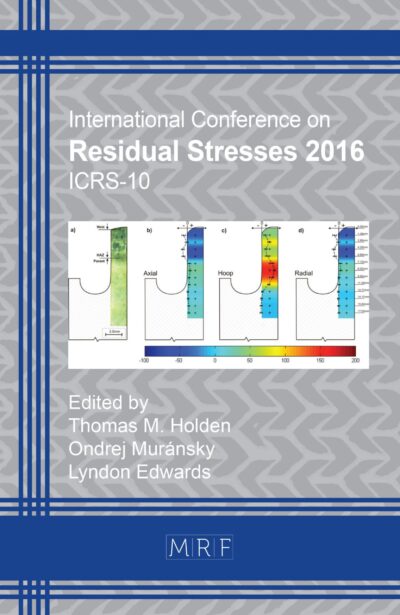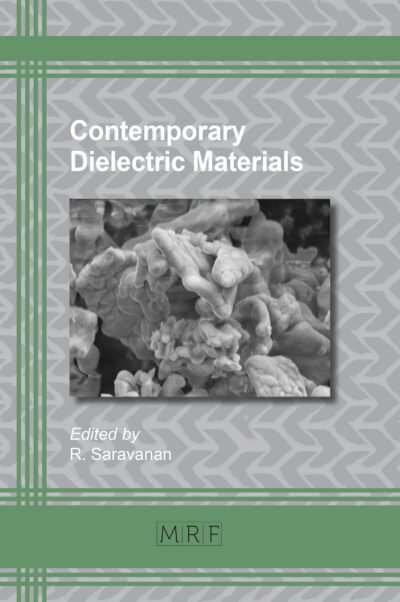Investigation of the repeatability of residual stress measurements using X-ray diffraction on cold extruded cups
Manuel FRIEDLEIN, Dominik HOFFMANN, Michael KNAPS, Marion MERKLEIN
Abstract: Cold extrusion is considered a sustainable production process as it is highly material-efficient. In order to further increase sustainability, the aim is to produce near-net-shape components, which leads to more complex geometries and thinner wall thicknesses. Residual stresses are taking on an increasingly important role here, as they have a strong influence on operating behavior and dimensional accuracy. The stresses can lead to distortion, especially when processing extruded components. One method for measuring residual stresses is X-ray diffractometry, which, however, tends to have high fluctuations in the measurement. To ensure that interactions between residual stress and distortion can be reliably detected, the repeatability of measurements on forward extrusion cups is analyzed.
Keywords
Residual Stresses, Cup Forward Extrusion, Cold Forming, X-Ray Diffraction
Published online 5/7/2025, 10 pages
Copyright © 2025 by the author(s)
Published under license by Materials Research Forum LLC., Millersville PA, USA
Citation: Manuel FRIEDLEIN, Dominik HOFFMANN, Michael KNAPS, Marion MERKLEIN, Investigation of the repeatability of residual stress measurements using X-ray diffraction on cold extruded cups, Materials Research Proceedings, Vol. 54, pp 715-724, 2025
DOI: https://doi.org/10.21741/9781644903599-77
The article was published as article 77 of the book Material Forming
![]() Content from this work may be used under the terms of the Creative Commons Attribution 3.0 license. Any further distribution of this work must maintain attribution to the author(s) and the title of the work, journal citation and DOI.
Content from this work may be used under the terms of the Creative Commons Attribution 3.0 license. Any further distribution of this work must maintain attribution to the author(s) and the title of the work, journal citation and DOI.
References
[1] E. Doege, B.-A. Behrens, Handbuch Umformtechnik: Grundlagen, Technologien, Maschinen, third. Aufl. Twentiethsixteenth, Springer Berlin Heidelberg, Berlin, Heidelberg, 2016.
[2] A. Jobst, M. Merklein, Stability of forming induced residual stresses in stainless steel parts at elevated temperature, Proceedings of the ICRS11 – 11th International Conference on Residual Stresses (2023).
[3] W. Akhtar, I. Lazoglu, S.Y. Liang, Prediction and control of residual stress-based distortions in the machining of aerospace parts: A review, Journal of Manufacturing Processes 76 (2022) 106–122. https://doi.org/10.1016/j.jmapro.2022.02.005
[4] A.Z. Kocańda, T. Wanheim, Influence of Residual Stresses on Dimensional Instability of Cold-Formed Workpieces During Machining, Proceedings of the Institution of Mechanical Engineers, Part B: Journal of Engineering Manufacture (1991). Https://doi.org/10.1243/PIME_PROC_1991_205_070_02
[5] H. Long, P.G. Maropoulus, Dimensional Error Prediction of Cold Formed Components Using Finite Element Analysis, Proceedings of the IASTED International Conference on Applied Simulation and Modelling, (2004).
[6] A. Jobst, C. Kiener, M. Merklein, Investigations on Residual Stress Generation in Extruded Steel Components, Hamburg, 2019.
[7] A. Jobst, D. Floros, P. Steinmann, M. Merklein, Component residual stress control in forward rod extrusion by material flow and tribology—experiments and modeling, Forschung im Ingenieurwesen 85 (2021) 733–744. https://doi.org/10.1007/s10010-021-00509-3
[8] A. Franceschi, J. Stahl, C. Kock, R. Selbmann, S. Ortmann-Ishkina, A. Jobst, M. Merklein, B. Kuhfuß, M. Bergmann, B.-A. Behrens, W. Volk, P. Groche, Strategies for residual stress adjustment in bulk metal forming, Arch Appl Mech 91 (2021) 3557–3577. https://doi.org/10.1007/s00419-021-01903-7
[9] N.S. Rossini, M. Dassisti, K.Y. Benyounis, A.G. Olabi, Methods of measuring residual stresses in components, Materials & Design 35 (2012) 572–588. https://doi.org/10.1016/j.matdes.2011.08.022
[10] DIN EN 15305:2008, Non-destructive testing – Test method for residual stress analysis by X-ray diffraction; German version EN 15305:2008.
[11] F. Jaeger, A. Franceschi, H. Hoche, P. Groche, M. Oechsner, Statistical analysis of the reproducibility of residual stress measurements in cold extruded parts, Arch Appl Mech 91 (2021) 3665–3677. https://doi.org/10.1007/s00419-021-01953-x
[12] C. Filho, J. Medeiros, L.G. Martinez, V.C. Pinto, Study of Error Analysis and Sources of Uncertainty in the Measurement of Residual Stresses by the X-Ray Diffraction, in: Materials Research Proceedings, Vol. 6, pp. 75–80. https://doi.org/10.21741/9781945291890-13
[13] W. Yiwen, L. Sijin, Z. Pei, W. Xiaoyu, Influencing Factors on Measuring Surface Residual Stress of Steel Bars by X-ray Diffraction Method, AJPA 9 (2021) 121. https://doi.org/10.11648/j.ajpa.20210905.14
[14] Q. Luo, A.H. Jones, High-precision determination of residual stress of polycrystalline coatings using optimised XRD-sin2ψ technique, Surface and Coatings Technology 205 (2010) 1403–1408. https://doi.org/10.1016/j.surfcoat.2010.07.108
[15] M. Sedighi, Nazemnezhad R., Effect of Peak Positioning Method on Accuracy of Xray Diffraction Residual Stress Measurement, Exp Tech 40 (2013). Https://doi.org/10.1007/s40799-016-0033-9
[16] A. Jobst, M. Merklein, Stability of forming induced residual stresses in stainless steel components under mechanical load, Manufacturing Letters 35 (2023) 49–54. https://doi.org/10.1016/j.mfglet.2023.07.022














